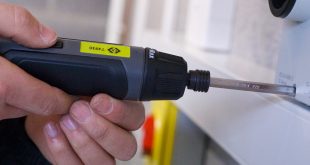JELD-WEN, the timber window manufacturers have supplied a replacement timber window for the Antarctic, 60 years after the company supplied the original timber huts.

The United Kingdom Antarctic Heritage Trust has commissioned JELD-WEN to provide a replacement for a damaged timber window for Bransfield House, the main hut at Port Lockroy, one of the first permanent bases in Antarctica. From the 1940s, it conducted geology, meteorology and botany and kick started the UK’s scientific research interest on the continent. Today it is a living museum for the thousands of Antarctic tourists that visit each year.
General manager of JELD-WEN Lowestoft, (where the window was made) Tom Horne said: “It’s a real honour to be able to supply a window to the original Antarctic hut that our company built 60 years ago.
“This really does show how timber windows can last a lifetime – the huts are apparently still in really good condition which is amazing when you consider the severe weather conditions and the fact that they are 40 degrees below freezing and nearly seven decades old! There are no harsher conditions than the Antarctic and it clearly demonstrates how back then as today, our products are built to last!”
The relationship with the Antarctic started well over 60 years ago when Boulton & Paul, the company JELD-WEN bought back in 1999, supplied the actual timber huts to be sent to Port Lockroy, one of the Government’s bases in the Antarctic, JELD-WEN only discovered this exciting part of its history recently when sorting through the company archives, which led to finding an original purchase order for these historic timber huts.
On making contact with the UK Antarctic Heritage Trust, JELD-WEN staff were asked if they would be able to help with replacing a single window that had become damaged in Bransfield House, yet the rest of the hut and its windows remained solid, showing just how robust timber is, even in the most extreme weather conditions.
Port Lockroy was the first British Research outpost in the Antarctic that was built in 1944 as part of a wartime “Operation Tabarin” to provide weather reports for shipping. After the war, the base was transferred to the Falkland Islands Dependencies Survey (FIDS) and was later renamed ‘The British Antarctic Survey (BAS)’ in 1972.
The base was abandoned in 1962, but in recognition of the historical importance of the scientific research and exploration carried out by “Operation Tabarin”, it was declared Historic Sites and Monuments under the Antarctic Treaty System in 1995.
The base was restored in 1996 and since then has been open to visitors during the Antarctic summer, with over 15,000 tourist visitors per year.
 Builders Merchants Journal – BMJ Publishing to Builders Merchants and the UK merchanting industry for more than 95 years
Builders Merchants Journal – BMJ Publishing to Builders Merchants and the UK merchanting industry for more than 95 years



